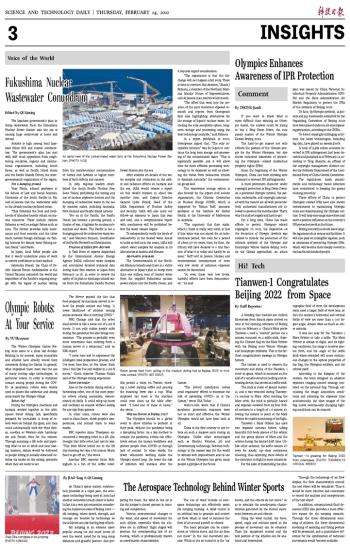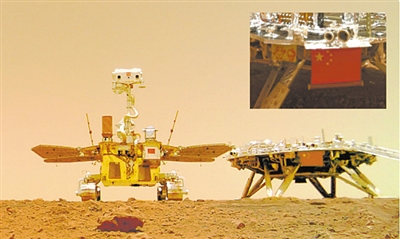
 |
| Tianwen -1's greeting for Beijing 2022 from outerspace. (PHOTO: TIANWEN-1'S OFFICIAL WEIBO) |
A blessing that traveled 320 million kilometers from distant space arrived on time at the opening ceremony of Beijing 2022 on February 4. China's Mars probe Tianwen-1 took a "cosmic" picture via a camera mounted on a selfie stick, framing the Chinese flag on the Mars Orbiter with the Beijing 2022 Winter Olympic and Paralympic emblems. This is the farthest congratulatory message in Olympic history.
The camera is used to observe the movement and status of the Tianwen-1 rover in space, which is mounted on the end of a variable structure locking and extending device, that serves as a selfie stick.
The stick is made of special material, and it was retracted during Tianwen-1's journey to Mars. After reaching the Mars orbit, the stick is partially heated and expands outward from its four folded sections to a length of 1.6 meters, allowing the camera to point at the Mars Orbiter for stable monitoring of its flight.
Tianwen-1 Mars Orbiter has used two separate cameras before, taking beautiful full-body photos of the orbiter and the group photos of Mars and the orbiter during the limited drift time. Unlike other cameras, the selfie camera allows for steady, up-close continuous shooting, thus capturing more details of the circulator in flight in more situations.
For the sake of maximizing the photographic field of view, the development team used a larger field of view lens, so that the camera's horizontal and vertical fields of view are more than a 100 degree angle, almost twice as much as other cameras.
It was not easy for the Tianwen-1 Mars Orbiter to take a selfie. The Mars Orbiter is always in flight, and its lighting conditions, the range it receives photos from, and the angle of the selfie stick when extended will cause continuous changes in the optical properties of the flag, the Olympics emblem, and the orbiter itself.
According to the designer of the camera, the team designed an adaptive exposure imaging control strategy centered on the national flag. Through calculating the image acquisition conditions and adjusting the exposure time autonomously, the clear images of the flag under continuously changing lighting conditions can be ensured.


 Next
Next




